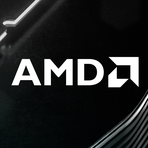The AI Tug-of-War: Microsoft’s Misstep and Chipmakers’ Ascent
July 31, 2024, 9:44 am
In the high-stakes world of technology, fortunes can shift like sand. Recently, Microsoft faced a storm, losing $340 billion in market value after disappointing quarterly results. Meanwhile, chipmakers like Nvidia and AMD soared, riding the wave of AI demand. This juxtaposition highlights a growing divide in the artificial intelligence landscape.
Microsoft's quarterly report revealed a troubling trend. While its Intelligent Cloud unit, which includes Azure, reported a 19% revenue increase, it fell short of analysts' expectations. The anticipated $28.7 billion turned into a mere $28.5 billion. This slight miss sent shockwaves through the market. Investors, once riding high on optimism, began to question the sustainability of the AI rally.
The tech giant's capital expenditures also raised eyebrows. Microsoft announced a staggering 78% increase, totaling $19 billion. This surge is aimed at expanding its global network of data centers to meet the insatiable demand for AI. However, it also signals a shift—a transfer of wealth from Microsoft shareholders to those of chipmakers like Nvidia. The cost of the AI arms race is becoming evident, and it’s hefty.
The broader tech sector felt the ripple effects. Meta, Amazon, Apple, Alphabet, and Tesla all saw declines in their stock prices. The collective drop was a stark reminder of the fragile nature of investor confidence. As one analyst noted, the high expectations set for tech companies this earnings season are now colliding with reality. The Nasdaq index, once soaring, has now dipped 8% from its record high.
Investors are becoming restless. They want to see tangible results from the massive investments pouring into AI. The anticipation that drove stock prices up is now turning into skepticism. The fear is palpable. Companies are spending heavily, but the returns are not matching the investments. This imbalance is causing a reevaluation of the AI narrative.
On the flip side, chipmakers are basking in the glow of AI's potential. AMD's forecast for third-quarter revenue exceeded market estimates, sending its shares up over 6%. Nvidia, the gold standard in AI computing, saw a 2.6% rise in its stock. Broadcom, Intel, and Qualcomm also enjoyed gains, as the demand for AI-related chips remains robust. The contrast is striking: while Microsoft falters, chipmakers thrive.
This divergence raises questions about the future of AI investments. Are we witnessing a bubble? The rapid rise in capital expenditures among tech giants suggests a race to dominate AI. But with costs skyrocketing, will the returns justify the spending? The market is holding its breath.
Analysts are cautious. They acknowledge the reality of AI's potential but emphasize the need for sustainable growth. The macroeconomic environment is challenging. Companies must navigate rising costs and shifting consumer demands. The AI landscape is not just about innovation; it’s also about managing expectations.
The AI race is akin to a marathon. Some runners sprint ahead, fueled by excitement and promise. Others lag behind, weighed down by the reality of their performance. Microsoft’s stumble serves as a cautionary tale. It’s a reminder that even giants can falter. The tech world is a delicate balance of ambition and execution.
As the dust settles, the focus will shift to upcoming earnings reports. Investors will scrutinize the numbers, searching for signs of recovery or further decline. The AI narrative is still unfolding, but the stakes are high. Companies must adapt quickly or risk being left behind.
In this tug-of-war between tech giants and chipmakers, the outcome remains uncertain. Will Microsoft rebound, or will it continue to struggle under the weight of its investments? Can chipmakers maintain their momentum, or will the market correct itself? The answers lie ahead, shrouded in the complexities of the tech landscape.
For now, the divide is clear. Microsoft’s challenges highlight the risks of overextending in the AI race. Meanwhile, chipmakers are reaping the rewards of a burgeoning market. The balance of power is shifting, and the implications could reshape the tech industry for years to come.
In conclusion, the AI landscape is a battlefield. Companies must navigate the treacherous waters of investment and expectation. The recent developments serve as a reminder that in the world of technology, fortunes can change in an instant. The race is on, and only the most strategic players will emerge victorious.
Microsoft's quarterly report revealed a troubling trend. While its Intelligent Cloud unit, which includes Azure, reported a 19% revenue increase, it fell short of analysts' expectations. The anticipated $28.7 billion turned into a mere $28.5 billion. This slight miss sent shockwaves through the market. Investors, once riding high on optimism, began to question the sustainability of the AI rally.
The tech giant's capital expenditures also raised eyebrows. Microsoft announced a staggering 78% increase, totaling $19 billion. This surge is aimed at expanding its global network of data centers to meet the insatiable demand for AI. However, it also signals a shift—a transfer of wealth from Microsoft shareholders to those of chipmakers like Nvidia. The cost of the AI arms race is becoming evident, and it’s hefty.
The broader tech sector felt the ripple effects. Meta, Amazon, Apple, Alphabet, and Tesla all saw declines in their stock prices. The collective drop was a stark reminder of the fragile nature of investor confidence. As one analyst noted, the high expectations set for tech companies this earnings season are now colliding with reality. The Nasdaq index, once soaring, has now dipped 8% from its record high.
Investors are becoming restless. They want to see tangible results from the massive investments pouring into AI. The anticipation that drove stock prices up is now turning into skepticism. The fear is palpable. Companies are spending heavily, but the returns are not matching the investments. This imbalance is causing a reevaluation of the AI narrative.
On the flip side, chipmakers are basking in the glow of AI's potential. AMD's forecast for third-quarter revenue exceeded market estimates, sending its shares up over 6%. Nvidia, the gold standard in AI computing, saw a 2.6% rise in its stock. Broadcom, Intel, and Qualcomm also enjoyed gains, as the demand for AI-related chips remains robust. The contrast is striking: while Microsoft falters, chipmakers thrive.
This divergence raises questions about the future of AI investments. Are we witnessing a bubble? The rapid rise in capital expenditures among tech giants suggests a race to dominate AI. But with costs skyrocketing, will the returns justify the spending? The market is holding its breath.
Analysts are cautious. They acknowledge the reality of AI's potential but emphasize the need for sustainable growth. The macroeconomic environment is challenging. Companies must navigate rising costs and shifting consumer demands. The AI landscape is not just about innovation; it’s also about managing expectations.
The AI race is akin to a marathon. Some runners sprint ahead, fueled by excitement and promise. Others lag behind, weighed down by the reality of their performance. Microsoft’s stumble serves as a cautionary tale. It’s a reminder that even giants can falter. The tech world is a delicate balance of ambition and execution.
As the dust settles, the focus will shift to upcoming earnings reports. Investors will scrutinize the numbers, searching for signs of recovery or further decline. The AI narrative is still unfolding, but the stakes are high. Companies must adapt quickly or risk being left behind.
In this tug-of-war between tech giants and chipmakers, the outcome remains uncertain. Will Microsoft rebound, or will it continue to struggle under the weight of its investments? Can chipmakers maintain their momentum, or will the market correct itself? The answers lie ahead, shrouded in the complexities of the tech landscape.
For now, the divide is clear. Microsoft’s challenges highlight the risks of overextending in the AI race. Meanwhile, chipmakers are reaping the rewards of a burgeoning market. The balance of power is shifting, and the implications could reshape the tech industry for years to come.
In conclusion, the AI landscape is a battlefield. Companies must navigate the treacherous waters of investment and expectation. The recent developments serve as a reminder that in the world of technology, fortunes can change in an instant. The race is on, and only the most strategic players will emerge victorious.


